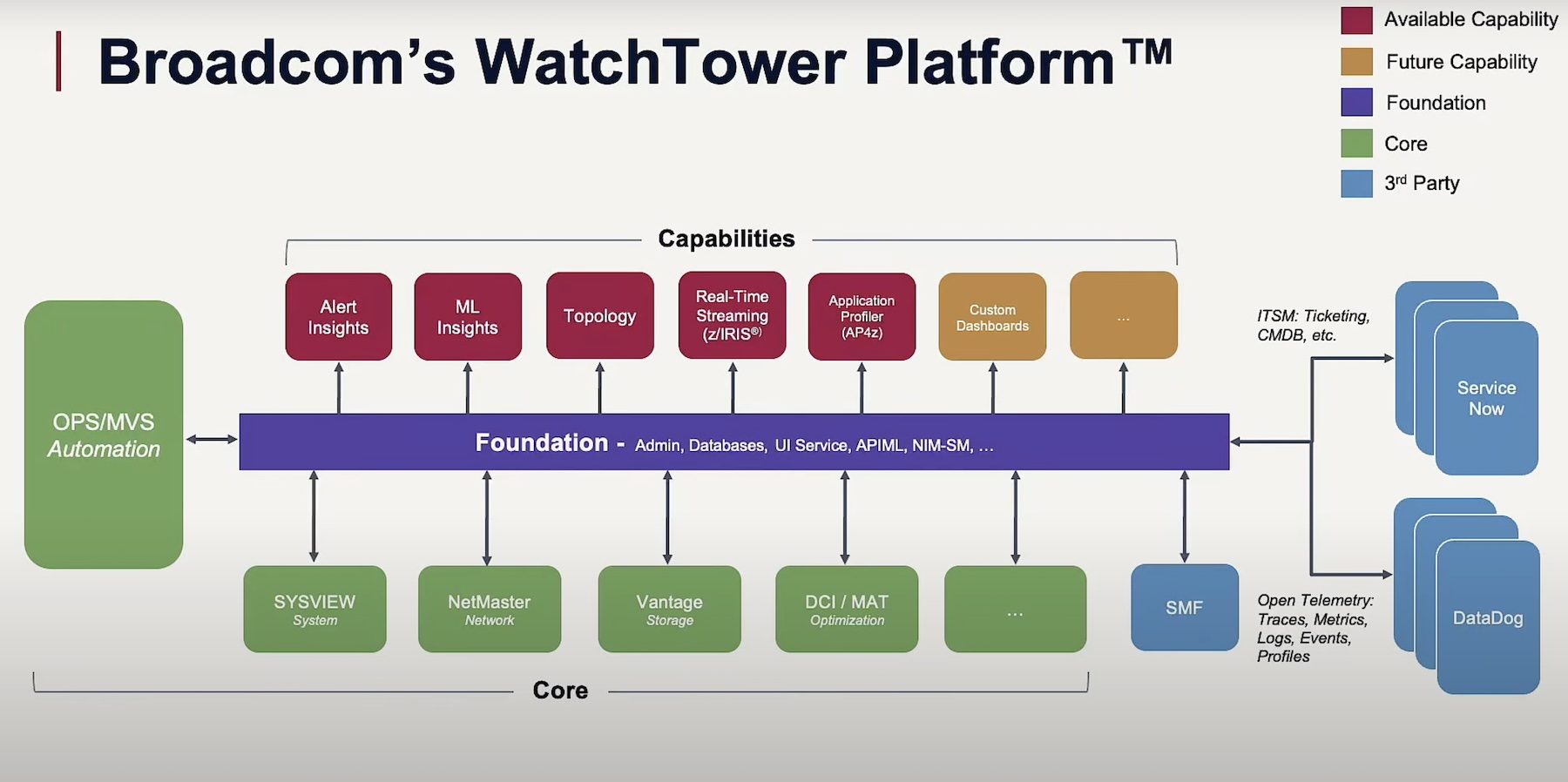Broadcom is working on making it easier for IT observability players to analyze data faster and get to the root cause of issues in mainframe without distractions. Its latest release, the WatchTower Platform, leverages embedded ML algorithms to provide granular visibility for domain experts.
“This solution is about bringing data in the context in the right moment to the person who needs to see it so that they don’t have to go hunting all over the place,” says Nicole Fagen, director of R&D for AIOps and automation at Broadcom.
Broadcom’s Foray into the Mainframe Market
Broadcom released WatchTower at a previous SHARE summit in March this year. The company’s mainframe initiative is fueled by CEO, Hock E. Tan’s deep fondness for the technology.
“So many large enterprises around the world continue to bet their business on the capabilities that are running on the mainframe,” Fagen says during her presentation at the Tech Field Day Extra at SHARE Kansas City 2024.
There a strong and stable market of mainframe users, and Tan is eager to tap into it. “The depth in his understanding of how the business runs, the importance of mainframe, and which customers are running what, is astronomical. This is a space he is going to double down on.”
But how did Broadcom, a semiconductor supplier, end up in the software business?Broadcom’s legacy in the semiconductor space is not unknown to many. “Any phone has an average of five of our semiconductors in it.”
After the Qualcomm acquisition fell through in 2018 due to a government veto, it was time for Broadcom to look at new horizons. After noodling with a list of potential acquisition opportunities, the acquisition of CA Technologies happened the same year.
CA Technologies, whose domain is everything mobile to mainframe, offered a firm foundation of enterprise relations with mainframe companies opening opportunities for Broadcom to break into the market where mainframe remains the core of IT.
Decluttering and Denoising Observability Data
Broadcom’s mainframe software products are organized around five key solution areas – data management, DevOps, cyber security, open-source, and AIOps.
Falling in the last category, WatchTower is an observability platform that aims to reduce the data mess and provide a clean and curated picture of the mainframe health.
Where most enterprise observability solutions seek to democratize data for all, WatchTower adopts a slightly different approach. It aims to serve data differently to people of different skill levels.
“It’s customized to the roles,” says Fagen. For example, the datasets an operator would see would be streamlined to their role and responsibilities, and would, therefore, be different from what a business line manager would see. By doing this, it exposes data in context, and hides that which is out of context for the users.
An operator goes through “an average of eight different systems for every single alert that they are trying to resolve,” she notes.
The moment problem erupts, the hunt for the proverbial “needles in the haystack” begins. Operators move from one interface to the next, collecting and coalescing data relevant to the problem. They huddle to analyze this data and make correlations. The findings may take a few hours to several weeks to surface depending on the complexity of the problem.
Two casts of professionals are responsible for this hunting and pecking. Operators, subject matter experts and optimization experts on the mainframe side, and business line managers and site reliability engineers over on the enterprise side.
Many of these professionals spend time on tools and technologies that are isolated from each other, and often detached from mainframe. For people on the enterprise side that have no visibility into mainframe, “transitioning their work to mainframe solutions is too big of a leap.”
WatchTower’s special power is to bring augmented intelligence to the fingertips of these IT personas.
“We’re going to enable them by bringing them the mainframe data in a context they already understand, in a workflow that they’re already leveraging.”

WatchTower performs alert clustering to declutter notifications. Metrics are correlated in context and chained together based on relevance to form single alerts. For each alert, WatchTower provides exhaustive insights that make drilling down to the root cause easy and quick. If there is a shortage of storage space, it shows where the capacity is running low, the sub-pools and their capacities, and any related alerts that can add to that information.
“If you’ve had an alert that’s similar to this in the past, we’ll tell you what that related alert was. You can look at it to see how it was resolved and that makes it a whole lot more effective to resolve this one,” Fagen says.
ML-driven insights offer a chance to compare baselines, reduce triage times, and anticipate issues well in advance.
Another key capability is infrastructure topology mapping. WatchTower overlays topology maps with alerts about problem applications. The maps are fully populated through auto-discovery. “It is not the case that you have to define a policy and then we decorate it,” she highlights.
But a big, busy topology map can also be challenging to glean data from. To prevent that, WatchTower isolates the relevant areas based on context and displays those only.
“We will give you only the portion of the topology that is most relevant to the alert you’re looking at. You can then change the filters and augment it and change it as you see fit.”
While brainstorming, SMEs can avail WatchTower’s shared virtual space that comes with its set of maps and insights as opposed to using a whiteboard for effective collaboration. This data is exportable to any CMDB solution, Fagen informs.
WatchTower is an on-prem solution, but offers the optionality to be deployed in public cloud.
To learn more about the WatchTower Platform, be sure to watch Broadcom’s presentation from Tech Field Day Extra at SHARE Kansas City 2024 at the Tech Field Day website.

